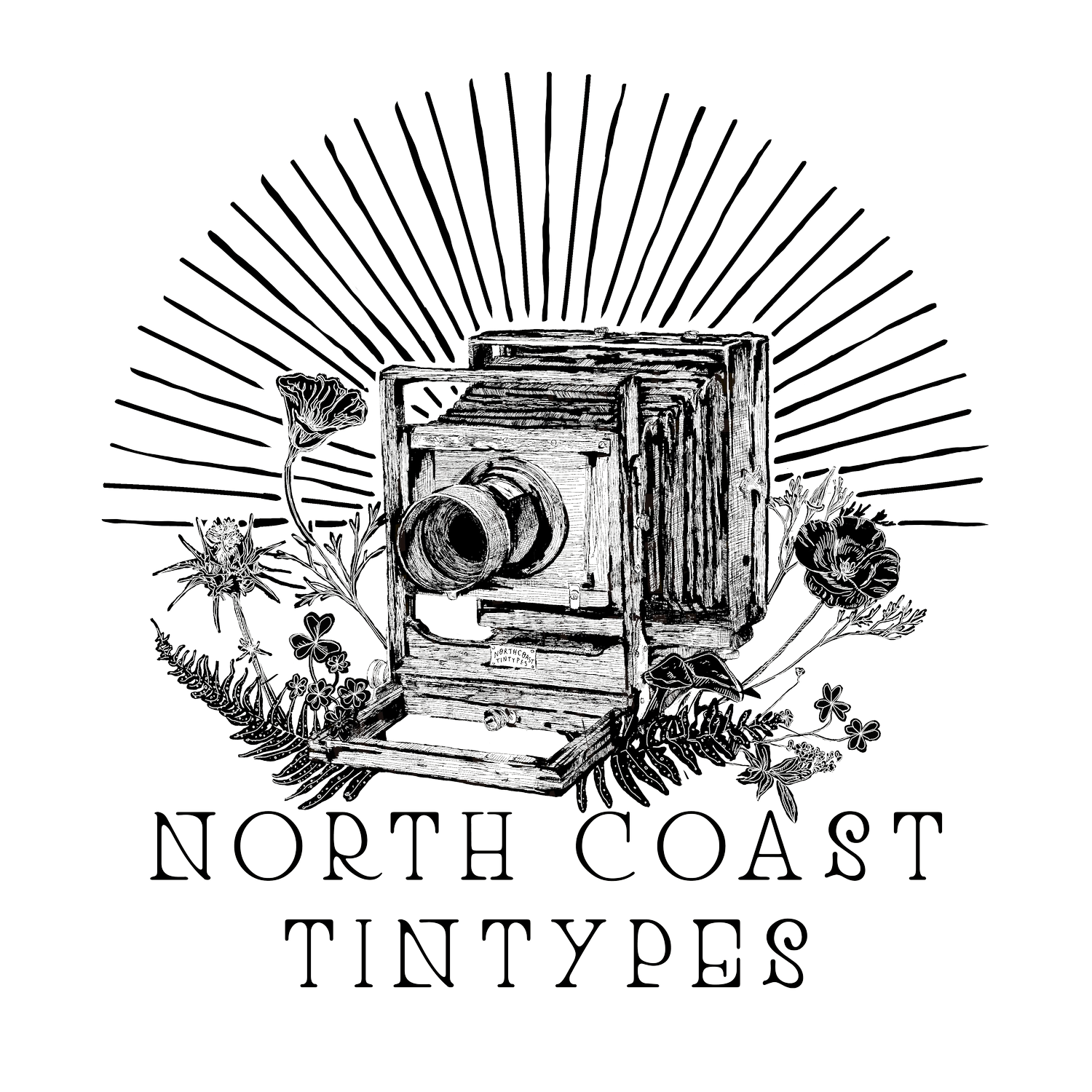Frequently asked questions:
What is a tintype?
A tintype is a photograph created using the 19th-century wet plate collodion process, where a light-sensitive emulsion is hand-poured onto a metal plate. The plate is then exposed to light and developed immediately, resulting in a one-of-a-kind positive image with a unique, durable, timeless quality.
-How long will I have to sit still?
Most tintype exposures are between 2-5 seconds.
-How long is the process?
Each image takes about 10 minutes to make before it is dried, scanned and varnished.
-What should I wear?
I’m a big fan of “come as you are” as I like to capture the purest, most authentic version of you.
Rather than “period specific” clothing, I encourage attire that is timeless and not too distracting. Textures, collared shirts, flannels, silk blouses, denim jackets, etc. are all articles of clothing that I recommend.
Things to avoid:
Graphic t-shirts (words will appear as the mirror image and can also be a bit distracting, but if your vintage AC/DC shirt is what you're vibing with, I'm happy to oblige.)
Tintypes can be high in contrast, so try to avoid solid white or black. Also, if there is more than one person in the shot, try to wear different colors, patterns or textures.
When will I receive the hard copy?
Once the tintype is scanned, varnished and has time to cure it can be picked up or mailed out. This process usually takes between 5-7 business days. I’m always happy to rush the post-processing for an additional fee.
Is there a digital copy?
Yes! I scan each tintype and will even send you the scan of the “rejects” from the session, even if you didn’t purchase the hard copy.
What happens if I move or don’t like the way I look?
I’m always happy to keep shooting until we have an image that you absolutely love. However, each image we take requires chemicals, material and time. A $15 fee is required for each retake (if it’s not due to chemical or technical error)
Where did my tattoos go?
Tattoos generally don’t show up well because tintypes are UV light sensitive and read colors differently compared to black and white film.
Do I have to be serious?
No! I generally encourage a little smirk or grin at least. If you don’t give any expression you’ll look extra serious in a tintype. But if serious and stern is what you're going for, that's fine by me!
How old is your camera?
I have a lot of cameras, but the ones I use most range from 30-100 years old!
How to get into this?
I've always had a passion for photography — I even started "The Photography Club" in 5th grade. (haha) While I appreciate all forms of photography, I’ve always been drawn to images that feel raw and carry a deeper meaning, rather than those that focus purely on technical perfection or composition. Light leaks, a bit of dust, an accidental fingerprint, or the unexpected chemical reactions around the frame are all unplanned moments that make an image more unique. When I discovered tintypes and the wet plate collodion process, I instantly knew I had found a perfect blend of my love for history, antiques, and analog photography. Now, through my business that combines tintypes and digital photography, I’m continually learning, experimenting, and expanding my creativity and knowledge.
-What is the difference between natural light and studio lit portraits?
Natural light portraits require a longer exposure time and are great for environmental portraits. Imagine a family portrait on your front porch, in your garden or in a field. Or perhaps an artist in their studio or a small business owner in front of their shop. Natural light portraits are more historically accurate so subjects look like they’re from the 1800’s and can sometimes be a bit softer in focus.
Studio lit portraits are made using high powered strobe lighting, mimicking the sun in a consolidated amount of time. Therefore, studio lit portraits are great for wiggly subjects like babies, kids and pets. Studio lit portraits are also more sharp and contrasty.
Will I get to take it home with me?
Not quite yet. Tintypes must be dried and varnished first, which takes at least 1-2 days, but I generally get them back to you within 5-7 business days because I’m just a one woman show, doing all the things.
How many people can you shoot at once?
The number of subjects in a frame depends on several things, but generally a good rule of thumb is 1-3 subjects for a 4x5 or 2-4 on a 5x7 or 8.5x6.5. The more subjects in the frame, the smaller they will be so there is some flexibility, depending on the situation.
Can I bring my pet?
It depends. Calm, well-behaved pets are welcome in the studio, though there are many cords and expensive equipment around, so if you’re concerned, I’m happy to come to you for a natural light session. However, with the longer exposure times, there’s a chance your pet might appear blurry due to movement. Occasionally, we get lucky and manage to keep their attention just long enough for them to stay still, but it's not always guaranteed. Personally, I don't mind if the pets or babies are slightly blurry— it doesn’t ruin the image for me.
It’s also important to note that certain breeds don’t photograph as well in tintype. Animals with dark or matte fur tend to not show up as clearly as lighter, shinier breeds.

